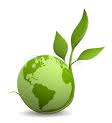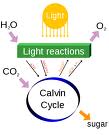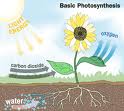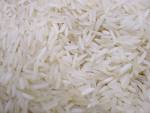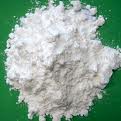1. The photosynthesis conducted by land plants and algae is the ultimate source of energy and organic material in nearly all ecosystems.
2. It radically changed the composition of the early Earth's atmosphere, which as a result is now 21% oxygen.
3. Animals and most other organisms are aerobic( a type of air), relying on oxygen; those that do not are confined to relatively rare anaerobic environments.
4. Plants are the primary producers in most terrestrial ecosystems and form the basis of the food web in those ecosystems. Many animals rely on plants for shelter as well as oxygen and food.
6. Some plants have coevolved with nitrogen fixing bacteria, making plants an important part of the nitrogen cycle. Plant roots play an essential role in soil development and prevention of soil erosion.
7. The study of plant uses by people is called economic botany or ethno botany, some consider economic botany to focus on modern cultivated plants, while ethno botany focuses on indigenous plants cultivated and used by native peoples.
8. Human cultivation of plants is part of agriculture, which is the basis of human civilization. Plant agriculture is subdivided into agronomy, horticulture and forestry.
9.Plants also produce oxygen and oxygen is very important to us as we need oxygen to survive and without it we will die because of suffocation
10. Much of human nutrition depends on land plants, either directly or indirectly.
Human nutrition depends to a large extent on cereals, especially maize (or corn), wheat and rice.
Human nutrition depends to a large extent on cereals, especially maize (or corn), wheat and rice.
11. Other staple crops include potato, cassava, and legumes. Human food also includes vegetables, spices, and certain fruits, nuts, herbs, and edible flowers.
12. Beverages produced from plants include coffee, tea, wine, beer and alcohol.
Sugar is obtained mainly from sugar cane and sugar beet.
Cooking oils and margarine come from maize, soybean, rapeseed, safflower, sunflower, olive and others.
Sugar is obtained mainly from sugar cane and sugar beet.
Cooking oils and margarine come from maize, soybean, rapeseed, safflower, sunflower, olive and others.
13. Food additives include gum Arabic, guar gum, locust bean gum, starch and pectin.
Livestock animals including cows, pigs, sheep, and goats are all herbivores; and feed primarily or entirely on cereal plants, particularly grasses.
Livestock animals including cows, pigs, sheep, and goats are all herbivores; and feed primarily or entirely on cereal plants, particularly grasses.




